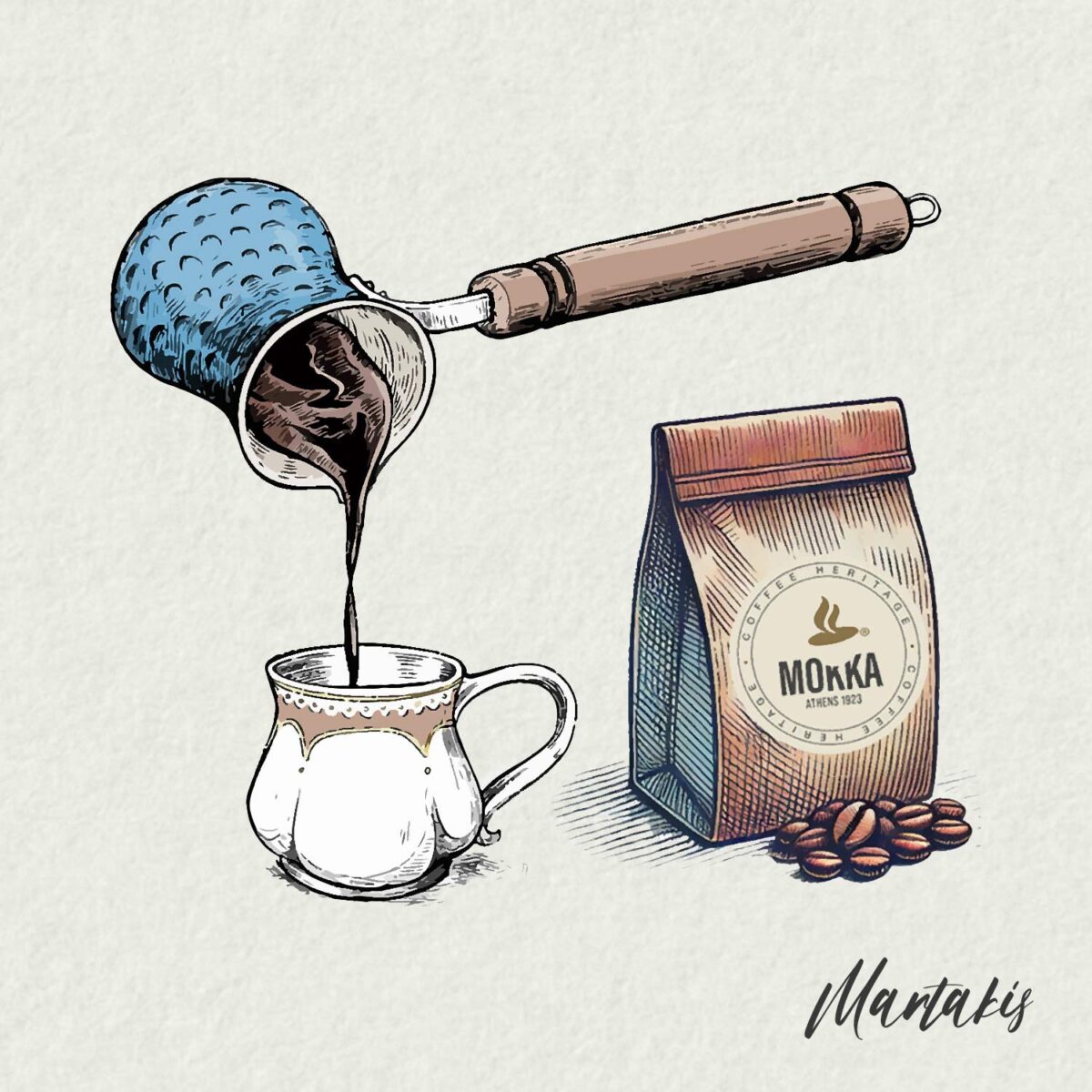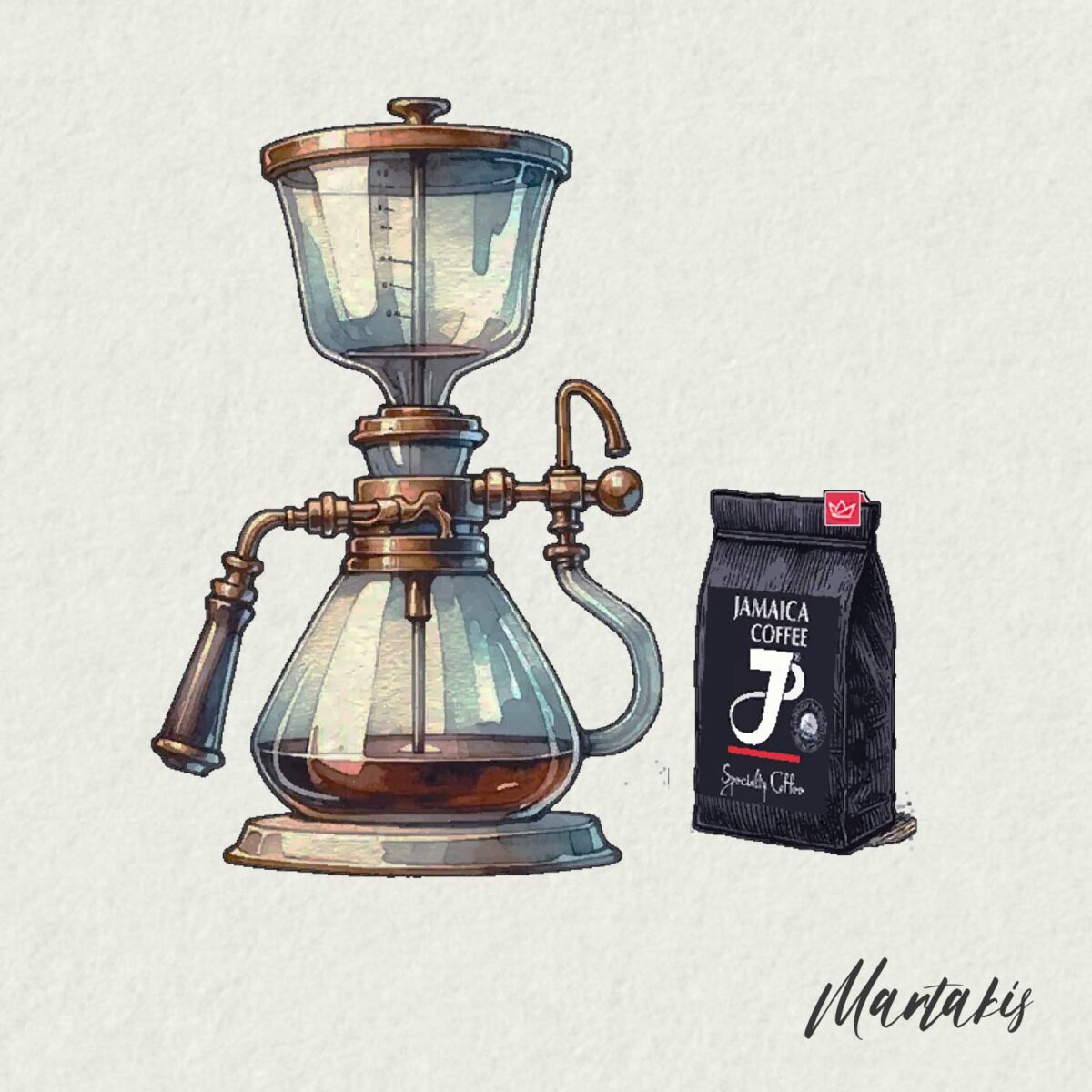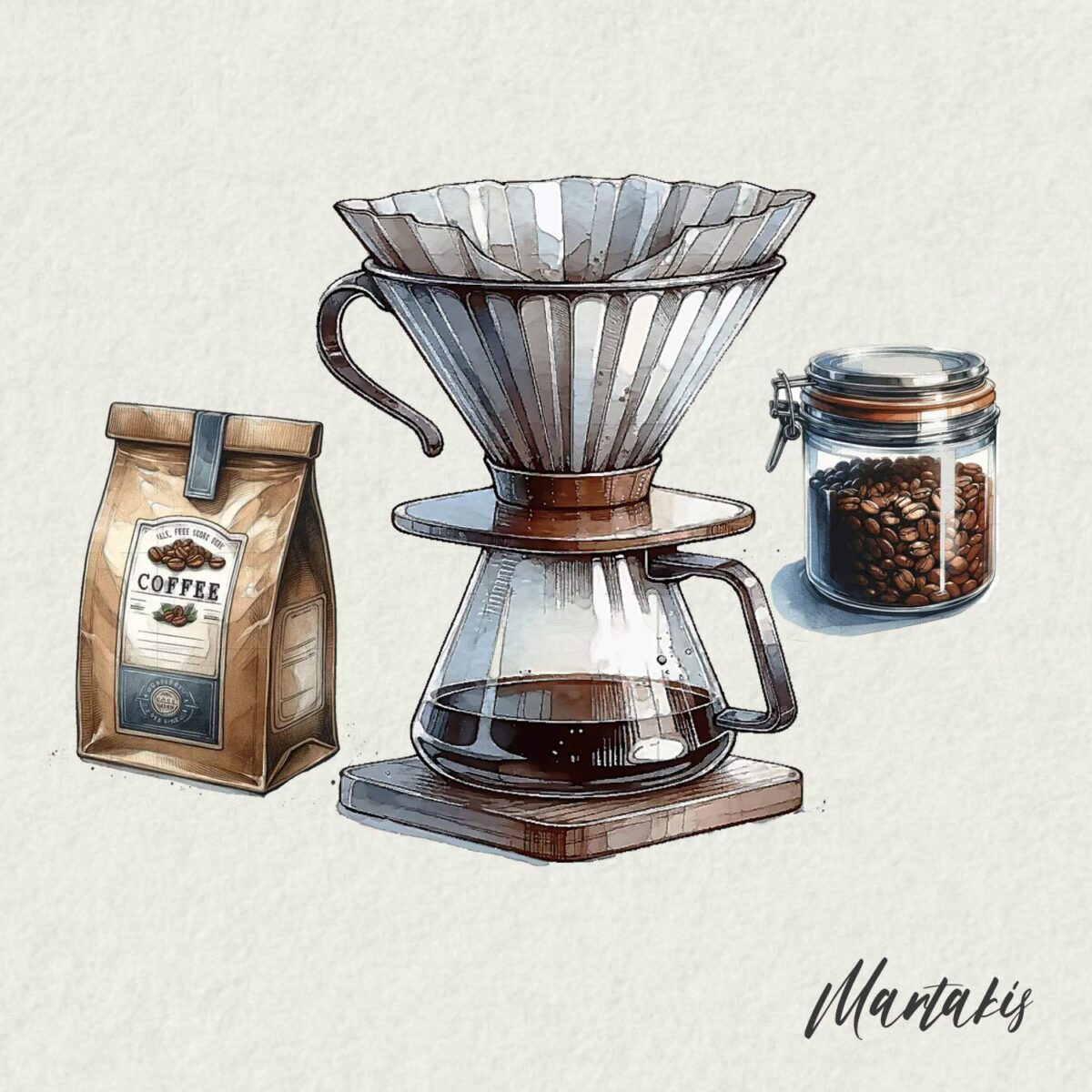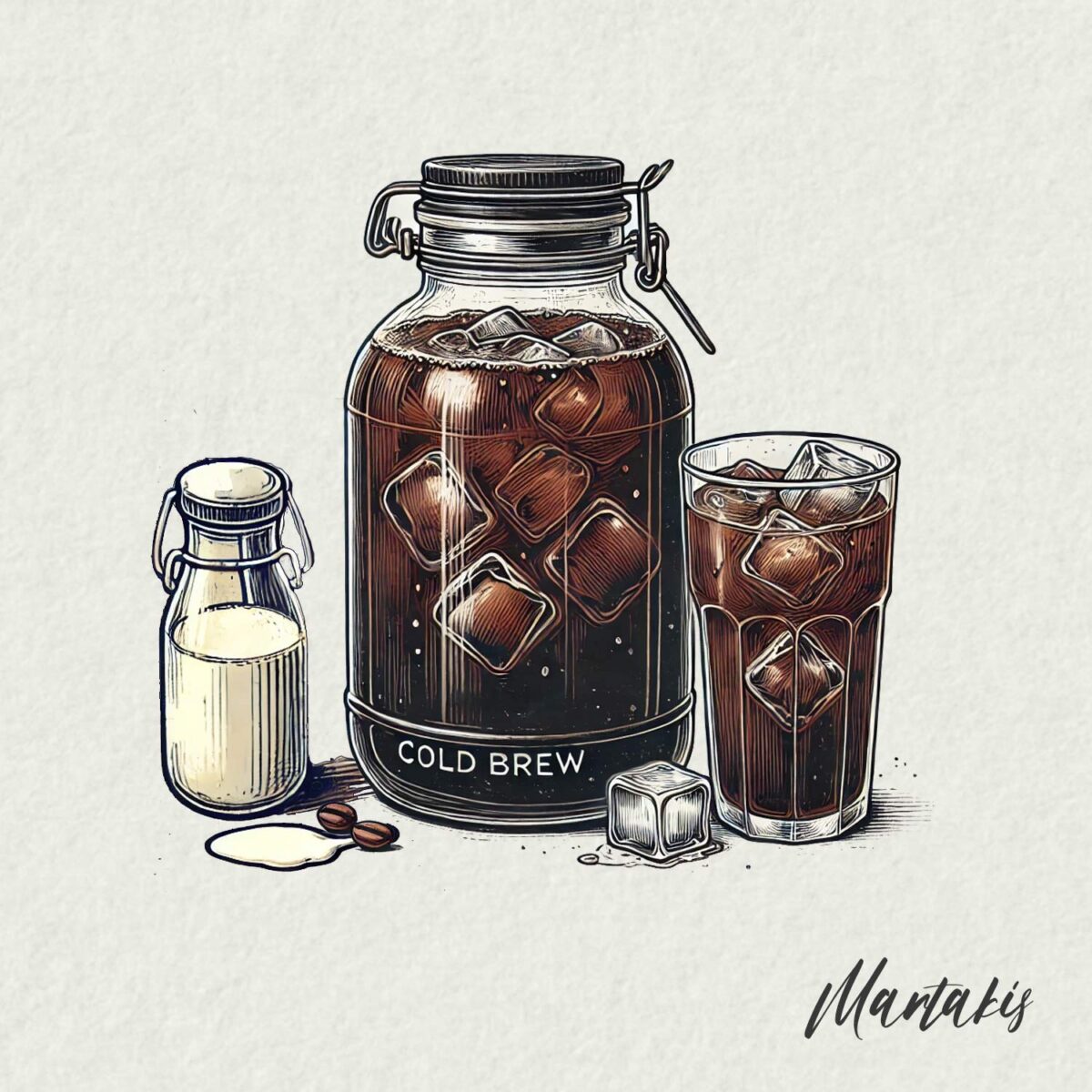Coffee Grind Size Chart and Brew Guide

Use this tool to create a customized grind size chart for over 100 coffee grinders!
Whether you're brewing espresso, pour-over, or French press, simply select your grinder brand and model to find the perfect settings.
Looking for more information on grind sizes and brewing methods? Keep reading to discover detailed guides, illustrations, and essential tools to achieve the most accurate grind for your brew.
Have any suggestions on brewing techniques, grinder choices, or other feedback? I’d love to hear from you—drop a comment below!
Coffee Brewing Methods
Now that you’re familiar with the grind settings, let’s explore each brewing method included in the tool, complete with ideal grind ranges and the reasoning behind them.
You’ll also find expert tips for using this tool effectively, along with a free downloadable coffee grind chart!
Turkish Coffee

Turkish coffee is brewed in a cezve, using ultra-fine grounds that stay in the cup without filtration. The water and coffee heat slowly until the water rises just before boiling, creating a bold flavor.
A grind size of 40-100 microns will give you the strong, bold, and slightly muddy taste Turkish coffee is known for.
A grind size of 100-220 microns is used for a lighter brew. The grounds settle faster, creating a smoother texture and milder flavor, which can be appealing for those who find traditional Turkish coffee too strong.
The ultra-fine grind not only affects the taste but also the texture and mouthfeel of Turkish coffee. As the grounds settle, the coffee takes on a rich body and velvety consistency.
Espresso

Espresso relies on a fine grind size, typically ranging from 180 to 380 microns, to achieve the right balance of flavor and extraction. Due to the high pressure used in espresso machines, even slight changes in grind size can significantly impact the outcome.
Finer grounds create more surface area for quick extraction, which is essential for producing a rich, concentrated shot in just 25-30 seconds.
If the grind is too fine, it can result in over-extraction, leading to a bitter taste. Conversely, if the grind is too coarse, it can cause under-extraction, resulting in a sour flavor. Precision in grind size is crucial for achieving the perfect espresso shot.
French Coffee Machine

When we talk about filter coffee machines, we’re referring to electric brewers that utilize percolation or pour-over methods.
The ideal grind size can vary significantly depending on the model and type of machine, typically falling between medium-fine and fine, or 300 to 900 microns.
A good rule of thumb for finding your perfect grind is to experiment within the middle range. If your coffee tastes too bitter, try a coarser grind; if it’s sour, go for a finer grind.
Aeropress

The AeroPress is a popular coffee maker known for its flexibility. You can use it inverted, customize your brewing method, and explore different techniques.
That’s the reason why it has such a broad range. If you use it inverted, you can certainly go for coarser grinds; otherwise, it’s a good idea to start with a medium grind and fine-tune it from there.
This versatility has inspired many enthusiasts to create tools and accessories that enhance the AeroPress experience even further.
Moka Pot

The Moka pot, also known as a press pot or stovetop espresso maker, brews coffee using a medium-fine grind size between 360-660 microns. Bialetti recommends a medium-fine grind that feels gritty but not powdery.
The pot operates at 1-2 bars of pressure, which is more than humans can generate manually but less than a traditional espresso machine. This process results in concentrated coffee, though not quite espresso.
A coarser grind can produce a lighter cup, while a finer grind yields a more intense flavor. Care should be taken with very fine grinds, as they can clog the filter, disrupting the brewing process and preventing the coffee from extracting properly.
Siphon Coffee

A siphon, or vacuum coffee brewer, is an immersion-type coffee maker that operates on the principles of vapor pressure and vacuum. It consists of two chambers: a lower chamber for water and an upper chamber for coffee grounds.
The siphon brewing process involves pressurized water flowing from the bottom chamber to the top chamber, where it mixes with the coffee. For siphon brewing, a medium to medium-fine grind size of 375-800 microns is recommended.
This range allows for a steady flow of water through the coffee bed, preventing excessive clogging and slow filtration, as well as minimizing the risk of fine particles entering the lower chamber.
V-60

The V60 is a popular pour-over coffee brewing device created by the Japanese company Hario. Its name derives from its V-shaped 60-degree cone design.
Made from ceramic, glass, plastic, or stainless steel, the inner walls of the dripper feature iconic spiral grooves that facilitate slower and controlled water flow, allowing for a more even extraction.
While we’ve created a range for pour-over brewers in this chart, the V60 deserves its own highlight due to its status as the most popular pour-over brewer worldwide. It is frequently seen in brewing competitions and has won the majority of World Brewers Cup competitions.
For V60 brewing, a medium grind size of 400-700 microns is recommended, which allows for optimal extraction and a flavorful cup of coffee.
Pour-over

Pour-over brewing offers a precise, hands-on approach to coffee, where water is manually poured over coffee grounds through a filter. Devices like the Chemex, V60, and Kalita Wave are popular choices, each providing subtle variations in the brewing experience.
Each brewer thriving in different parts of this range. The V60, known for its 60-degree angle and spiral ridges that promote even extraction, performs best with a medium-fine grind of 410-700 microns. This grind size allows for a balanced, controlled brew, emphasizing bright, nuanced flavors.
The Chemex, with its thicker filter and larger capacity, works better with coarser grinds toward the upper range of 700-930 microns, producing a slower extraction and a lighter, more delicate cup.
The Kalita Wave, with its flat-bottomed design, benefits from a grind size in the middle of the spectrum, offering consistent results with a well-rounded flavor.
Cupping

Cupping is the best way to taste and evaluate coffee, focusing on important aspects like aroma, flavor, body, and acidity. With my five years of experience coaching people in sensory analysis, I can say it’s a game changer for farmers, roasters, and buyers who want to figure out the quality of their coffee.
During a cupping session, you grind coffee coarsely and put it in small cups, then spoon it out to enjoy all those unique flavors.For a good cupping experience, aim for a grind size between 460 and 850 microns.
This size is slightly coarser than what’s typically used for filter brewing, and many professionals recommend a medium-fine grind or coarser. The National Coffee Association (NCA) suggests that 70-75% of coffee particles should pass through a U.S. Standard size 20 mesh sieve, which is approximately 840 microns.
French Press

The French press, also known as a press pot or plunger pot, is a classic brewing method that highlights the robust flavors of coffee. It involves steeping coarsely ground coffee in hot water and then using a plunger to separate the grounds from the brewed coffee.
When using a French press, a coarser grind size is essential—typically between 690 and 1300 microns. The larger openings of the mesh filter allow some fine particles to escape, contributing to the rich, full-bodied taste and cloudy appearance that many coffee lovers enjoy.
This unique texture is part of what makes French press coffee so appealing, as it delivers a bold flavor profile without the bitterness often associated with finer grinds. So, if you’re looking for a strong, textured cup, a coarse grind is your go-to for the French press!
Cold Brew

Cold brew coffee offers a smooth and refreshing alternative to traditional hot brews, utilizing cold or room temperature water over an extended steeping period—typically anywhere from a few hours to over a day. This unique brewing method requires a very coarse grind size to ensure optimal extraction and flavor.
For cold brew, we recommend a grind size of 800 to 1400 microns, but it can go even higher if desired. The larger particle size helps prevent over-extraction, resulting in a mellow, less acidic cup that highlights the coffee’s natural sweetness.
Some brewing methods even utilize coarser grinds, enhancing the smoothness of the final product. Whether you’re sipping it straight, over ice, or mixing it into a delicious coffee cocktail, a coarser grind is key to achieving that rich, well-rounded flavor profile characteristic of cold brew.
The Challenge of Measuring Coffee Grind Size
When it comes to brewing coffee, grind size plays a crucial role in the flavor of your cup. Even a small change in grind size can make a big difference in taste.
However, despite its importance, describing grind size is one of the toughest challenges in coffee brewing.
Unlike other brewing variables, such as water temperature or coffee weight, grind size is difficult to represent with a single value because it varies widely based on factors like the type of grinder used and its settings.

Here a some of the problems with representing grind size.
1. No Universal Standard
Grind settings on coffee grinders are anything but universal. The “2” setting on one grinder doesn’t match the “2” on another. Settings vary not just in numbers, but in forms—dials, clicks, notches, even textures—making exact recommendations tricky.
2. Grinder Variability
Even within the same model, grinders can differ significantly. Manufacturing differences, burr alignment, and calibration quirks mean that two grinders of the same brand might grind differently, leading to inconsistent results.
3. Subjective Terminology
Words like “fine” and “coarse” are relative. My version of a fine grind could look like your medium, and comparisons to “sand” or “flour” add another layer of subjectivity. Regional differences make these comparisons even less reliable.
4. Difficulty to Measure
Coffee grind particles vary in size and shape, even on the same grinder setting. Measuring each particle would require specialized (and very expensive) equipment, and average size calculations are complex.
The Coffee Grind Size Chart
We created this grind size tool to simplify the coffee brewing process.
Instead of describing grind size, this tool offers a clear and visual approach, letting you set your grinder confidently for each brewing method.
This chart displays the grind range for various coffee grinders, along with recommended settings tailored to popular brewing techniques.

Rather than setting your grinder to a vague suggestion, this tool gives you a reliable starting point, helping you fine-tune for the perfect extraction.
Additionally, the tool is useful for finding your next grinder, showcasing each model’s grind range and adjustment levels. This lets you choose a grinder that fits your brewing style at home.
Share your Thoughts!
This tool is designed to be perfectly usable, but it’s still a work in progress.
If you have suggestions for additional features or brewing techniques you’d like to see, please let us know in the comments below! Your feedback helps us enhance the experience for all coffee enthusiasts.

Greetings, I’m Alexandros, and this is your invitation to my coffee haven. The essence of this blog is simple yet profound: to craft the best in-depth, fact-checked articles on every facet of coffee. Expect a rich blend of recipes, guides, and reviews.
-

I was wondering which Baratza grinder to get and this was really useful, thank you!
-

Thank you, Maria! I’m glad you found it helpful! If you’re interested in learning more about coffee grinding, stay tuned—I’m working on a 9-article series that covers way more about grinding!
-
-

I like this project! It would be interesting to see what you come up with for percolator and tricolators.
-

I’m glad you like the project! That’s actually a great idea—I’ll definitely add recommendations for both percolators and tricolators as one of the next features for this tool.
-
-

Great idea! But the Niche Zero seems to have ‘Espresso’ listed twice above the diagram?
-

Thanks for pointing it out Eriksson, I’ts corrected now.
-
-

Recently the Oxo Rapid Brewer has come on the market. It would be very helpful to everyone if you could help those persons that have one with your recommendations. A lot of people are lost. Thank you for the great work you do.

Drop a Comment